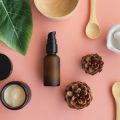1. Introduction to Clean DIY Skincare
Have you ever looked at the ingredient list on your favorite face cream and wondered, “What are all these chemicals?” If so, you’re not alone! More and more people in the US are turning to clean DIY skincare because it lets you control exactly what goes on your skin. Making your own skincare products at home isn’t just a fun craft—it’s also a way to make sure you’re using gentle, natural ingredients that are safe for your body and better for the environment.
But what does “clean” really mean when it comes to skincare? In simple terms, clean skincare focuses on using natural or naturally derived ingredients without harsh chemicals, artificial fragrances, or unnecessary additives. This approach is especially important in the US, where regulations around beauty product ingredients aren’t as strict as some other countries. That means taking charge of what you put on your skin can be an empowering move!
Why Make Your Own Skincare Products?
- Transparency: You know exactly what’s in each product.
- Customization: Tailor recipes to fit your unique skin needs—dry, oily, sensitive, or anything in between.
- Sustainability: Use eco-friendly packaging and reduce waste.
- Cost-Effective: DIY often costs less in the long run compared to high-end store-bought brands.
Key Ingredients: Carrier Oils & Essential Oils
The backbone of most clean DIY skincare recipes are carrier oils and essential oils. Carrier oils are moisturizing plant oils that form the base of creams, serums, and balms. Essential oils add natural scent and extra skin benefits—but they’re super concentrated, so you only need a few drops!
| Ingredient Type | Main Role | Popular Examples |
|---|---|---|
| Carrier Oils | Moisturize & nourish skin | Jojoba oil, Sweet almond oil, Grapeseed oil |
| Essential Oils | Add scent & targeted skin benefits | Lavender oil, Tea tree oil, Frankincense oil |
Why Clean Ingredients Matter in the US
Many mainstream skincare products in America contain parabens, sulfates, synthetic dyes, and other additives that can irritate sensitive skin or cause allergic reactions. By choosing clean, plant-based oils and essential oils for your homemade skincare routine, you can avoid these common irritants and create something that works for you—naturally!
Ready to dive into DIY? Let’s explore which carrier oils and essential oils work best for different skin types in the next section.
2. What Are Carrier Oils?
If you’re new to clean DIY skincare, you might hear the term “carrier oil” tossed around a lot. But what exactly are carrier oils, and why do they matter for your homemade beauty routine? Let’s break it down so you can make the best choices for your skin.
The Role of Carrier Oils in Skincare
Carrier oils are plant-based oils that help “carry” essential oils onto your skin. Essential oils are super concentrated and can irritate your skin if used alone. That’s where carrier oils come in—they dilute the essential oils, making them safe to use while also adding their own nourishing benefits. Think of carrier oils as the base or “main ingredient” in most DIY skincare recipes.
Benefits of Using Carrier Oils
- Moisturize and Nourish: Most carrier oils are loaded with vitamins, fatty acids, and antioxidants that hydrate and soothe your skin.
- Balance Oil Production: Some carrier oils (like jojoba) mimic your skin’s natural sebum, helping to balance oily or combination skin.
- Gentle on Skin: They’re generally mild and suitable for sensitive skin types—no harsh chemicals here!
- Customize Your Routine: With so many options, you can pick the perfect oil blend for your unique needs—whether you have dry, oily, or acne-prone skin.
How to Choose the Right Carrier Oil for Your Skin Type
The best part about carrier oils is that there’s something for everyone! Here’s a quick guide to help you pick the right one based on your skin type:
| Skin Type | Best Carrier Oils | Main Benefits |
|---|---|---|
| Dry Skin | Avocado oil, Sweet almond oil, Olive oil | Deeply hydrating, rich in nutrients, soothing for flaky skin |
| Oily/Acne-Prone Skin | Jojoba oil, Grapeseed oil, Hemp seed oil | Lightweight, non-comedogenic (won’t clog pores), helps regulate oil production |
| Sensitive Skin | Apricot kernel oil, Sunflower oil, Squalane oil (plant-based) | Mild, calming, less likely to cause irritation or allergic reactions |
| Mature/Aging Skin | Rosehip seed oil, Argan oil, Pomegranate seed oil | Packed with antioxidants and vitamins to support elasticity and reduce fine lines |
Pro Tips for Picking & Using Carrier Oils:
- Go cold-pressed & unrefined: These methods keep all the good stuff (vitamins and nutrients) intact.
- Patch test first: Always test a small amount on your inner arm before using it all over your face.
- Store properly: Keep oils in a cool, dark place to make them last longer—some even prefer refrigeration!
- Mix & match: Don’t be afraid to blend two or more carrier oils to customize your skincare game.
Your Clean Skincare Foundation
Carrier oils are the unsung heroes of clean DIY skincare. With the right pick for your skin type, you’ll get all the hydration and nourishment you need without any weird chemicals or fillers. In the next section, we’ll dive into essential oils—and how they pair perfectly with these plant-powered bases.
![]()
3. Popular Carrier Oils in the US
If youre diving into clean DIY skincare, carrier oils are your best friends! In the US, there are a few go-to options that are easy to find and super versatile. Lets take a closer look at some of the most popular carrier oils: jojoba oil, coconut oil, and sweet almond oil. Each one has its own unique benefits—and a couple of things to watch out for.
Jojoba Oil
Jojoba oil is a classic in American DIY skincare routines because it’s lightweight and closely mimics our skin’s natural sebum. It absorbs quickly without leaving a greasy feel, making it perfect for all skin types—including oily and acne-prone skin.
| Pros | Cons |
|---|---|
| – Non-comedogenic (won’t clog pores) – Great for sensitive and acne-prone skin – Long shelf life |
– Can be pricier than other oils – May not provide enough moisture for very dry skin |
Coconut Oil
Coconut oil is super popular in the US because it’s affordable, easy to find, and multi-purpose. It’s solid at room temperature but melts on your skin, which makes it great for balms and body butters. Coconut oil is especially loved for its moisturizing properties.
| Pros | Cons |
|---|---|
| – Deeply moisturizing – Antibacterial properties – Affordable and widely available |
– Can clog pores (not ideal for face if you have acne-prone skin) – Solidifies in cooler temps (can be tricky to mix) |
Sweet Almond Oil
Sweet almond oil is another favorite for DIY beauty lovers. Its lightweight, mild, and absorbs well without feeling sticky. Plus, it’s packed with vitamins A and E, making it a gentle choice for almost everyone—even babies!
| Pros | Cons |
|---|---|
| – Mild and hypoallergenic – Good for sensitive skin – Contains vitamins A & E for extra nourishment |
– Not suitable for people with nut allergies – Slightly shorter shelf life compared to jojoba oil |
Quick Comparison Table: Popular Carrier Oils in the US
| Carrier Oil | Best For | Main Benefit | Main Drawback |
|---|---|---|---|
| Jojoba Oil | All skin types, especially oily or sensitive skin | Mimics natural sebum; non-greasy feel | More expensive than others; light moisture only |
| Coconut Oil | Body care; dry or normal skin types | Intense hydration; antibacterial properties | Can clog pores; solidifies in cool temps |
| Sweet Almond Oil | Sensitive skin; baby care; massage oils | Mild, vitamin-rich, easily absorbed | Not safe for nut allergies; shorter shelf life than jojoba oil |
Tip:
You can always blend different carrier oils to get the texture and benefits you want—just make sure to patch test first!
4. Essential Oils: Benefits & Safety Tips
Essential oils are the superstars of any DIY skincare routine, especially if you’re going for a clean and natural vibe. They smell amazing and pack some serious benefits, but it’s important to know which ones are favorites in the U.S. and how to use them safely.
Top Essential Oils Used in American DIY Skincare
Some essential oils have become cult favorites in American homes because they’re versatile and easy to use. Here’s a quick look at the top picks and what they do:
| Essential Oil | Main Benefit | Popular Uses |
|---|---|---|
| Lavender | Soothes skin, calming scent | Face masks, toners, bath soaks |
| Tea Tree | Cleanses, fights blemishes | Spot treatments, cleansers |
| Frankincense | Supports skin renewal | Serums, facial oils |
| Peppermint | Cools & refreshes skin | Body scrubs, foot creams |
| Rosemary | Clarifies oily skin & scalp | Toners, hair serums |
| Geranium | Balances skin’s oil production | Moisturizers, facial mists |
| Lemon | Brightens complexion (use with caution) | Cleansers, spot treatments (always dilute well!) |
Essential Oil Safety: What You Need to Know!
Before you start adding drops of essential oil everywhere, let’s talk safety. These plant extracts are powerful! Here’s how to enjoy their benefits without irritating your skin:
Dilution Is Key!
- Never use essential oils undiluted on your skin.
- The general rule: mix 1-2 drops of essential oil into 1 teaspoon (5 ml) of carrier oil for face products.
- You can use up to 3-5 drops per teaspoon for body products.
- Kiddos and sensitive skin? Always go lower on the amount!
Patch Test Every Time
- Mix your diluted blend as you would for your recipe.
- Dab a tiny amount inside your elbow or behind your ear.
- Wait 24 hours—if there’s no redness or itchiness, you’re good to go!
- If you see any reaction, skip that oil or try using less next time.
A Few More Quick Tips:
- Citrus oils like lemon or orange can make your skin extra sensitive to sun (photosensitivity). Avoid using them right before heading outdoors.
- If you’re pregnant or have health conditions, always check with your doctor first—some oils aren’t safe for everyone.
- Store all essential oils out of reach of kids and pets—these little bottles are potent!
With the right oils and safety habits, you’ll be ready to whip up skin-loving DIY blends that fit perfectly into your clean beauty routine!
5. Best Pairings for Glowing Skin
Mixing the right carrier oils and essential oils can do wonders for your skin! If you’re into DIY skincare, it’s fun and easy to customize blends that match your unique needs. Here are some of my favorite pairings that work beautifully for hydration, soothing sensitive skin, anti-aging, and more. Check out the table below for simple combos you can try at home.
Top Carrier and Essential Oil Combinations
| Skin Concern | Best Carrier Oils | Essential Oils to Add | Why It Works |
|---|---|---|---|
| Hydration & Dryness | Sweet Almond Oil Jojoba Oil |
Lavender Geranium |
Nourishes deeply, calms dry patches, leaves skin soft and bouncy. |
| Sensitive or Redness-Prone Skin | Calendula Oil Avocado Oil |
Chamomile Frankincense |
Soothes irritation, reduces redness, gentle enough for most skin types. |
| Oily & Blemish-Prone Skin | Grapeseed Oil Hemp Seed Oil |
Tea Tree Lemongrass |
Lightweight, helps control oil, fights breakouts without over-drying. |
| Mature or Aging Skin | Rosehip Seed Oil Pomegranate Seed Oil |
Rose Sandalwood |
Packed with antioxidants, helps smooth fine lines and adds radiance. |
| Dull or Tired Skin | Squalane Argan Oil |
Lemon Neroli |
Brightens complexion, boosts glow, gives a refreshed look. |
How to Mix Your Oils Safely
Tip: For every 1 ounce (about 30ml) of carrier oil, add about 6-12 drops of essential oil. Always do a patch test before using a new blend all over your face!
Your Simple DIY Routine Guide:
- Cleansing: Use lighter carrier oils like jojoba or grapeseed with a drop of tea tree for fresh-feeling skin.
- Nourishing Night Serum: Try rosehip seed oil plus frankincense for an overnight glow boost.
- Mood-Lifting Facial Massage: Blend argan oil with a few drops of neroli—your skin and senses will thank you!
The best part about DIY skincare is making it personal. Play around with these combos and see what makes your skin happiest!
6. Quick & Easy DIY Skincare Recipes
Ready to jump into clean, homemade skincare? Here are some super simple recipes using the best carrier and essential oils—so you can start pampering your skin with natural goodness right away! Each recipe uses ingredients recommended earlier in this guide and features easy steps for beginners.
1. Nourishing Facial Oil Blend
| Ingredient | Amount | Purpose |
|---|---|---|
| Jojoba Oil | 1 tbsp | Balances oil, hydrates |
| Rosehip Seed Oil | 1 tbsp | Brightens, supports skin renewal |
| Lavender Essential Oil | 2 drops | Soothes, calms skin |
| Frankincense Essential Oil | 2 drops | Tones, rejuvenates skin |
How to Make:
- Add all ingredients into a small glass dropper bottle.
- Shake gently to mix.
- Apply 2-3 drops to clean face morning and night.
2. Gentle Body Scrub for Smooth Skin
| Ingredient | Amount | Purpose |
|---|---|---|
| Coconut Oil (unrefined) | 1/4 cup | Moisturizes, softens skin |
| Sugar (white or brown) | 1/2 cup | Exfoliates dead skin cells |
| Lemon Essential Oil* | 5 drops | Energizes, brightens skin (use at night only) |
| *Lemon essential oil can make skin sun-sensitive. Use this scrub at night and rinse thoroughly. | ||
How to Make:
- Melt coconut oil if solid, let it cool slightly.
- Mix in sugar and lemon essential oil until combined.
- Scoop a small amount and gently massage onto damp skin in circular motions. Rinse well.
3. Soothing Roll-On for Blemishes & Redness
| Ingredient | Amount | Purpose |
|---|---|---|
| Squalane Oil (plant-based) | 2 tsp | Mimics skin’s natural oils, non-greasy moisturizer |
| Tea Tree Essential Oil | 2 drops | Cleanses, targets blemishes |
| Lavender Essential Oil | 1 drop | Soothe irritation |
How to Make:
- Add all ingredients to a 10ml roll-on bottle.
- Screw on the cap and shake gently.
- Dab directly onto blemishes or irritated areas as needed.
TIPS FOR SUCCESSFUL DIY SKINCARE:
- If you have sensitive skin, always do a patch test first!
- Store your creations in clean, airtight containers out of direct sunlight.
- If you want to change up essential oils based on your favorite scents or needs, feel free! Just stick with gentle oils recommended for skincare.
You’ll be amazed how easy it is to create personalized skincare right at home with just a few quality carrier and essential oils. Happy crafting!
7. Where to Shop & Final Tips
Ready to start making your own clean skincare? Finding good-quality carrier and essential oils in the US is easier than you might think! Here are some trusted spots where you can shop, plus a few handy tips to make sure you’re getting the best for your skin.
Trusted Places to Buy Oils in the US
| Store | What Youll Find | Why We Like It |
|---|---|---|
| Whole Foods Market | Wide range of organic and cold-pressed oils; many popular essential oil brands | High standards for natural products, knowledgeable staff |
| Target | Bestselling brands like NOW Solutions and Plant Therapy; starter kits | Affordable, easy to find across the country, great for beginners |
| Local Health Food Stores | Unique local brands, bulk options, refill stations sometimes available | Support small businesses, often more eco-friendly packaging choices |
| Amazon | Huge selection of both well-known and indie brands; customer reviews help with choices | Convenient, lots of variety, but check seller ratings and reviews carefully! |
| Specialty Online Retailers (like Mountain Rose Herbs or Plant Therapy) | High-quality, ethically sourced oils; detailed product info and education resources | Great for when you want something specific or organic-certified |
Smart Shopping Tips for Oils
- Always read labels: Look for 100% pure oils with no additives or fillers. For carrier oils, “cold-pressed” is usually best. For essential oils, check that they are labeled as “therapeutic grade.” Avoid synthetic fragrances.
- Check packaging: Oils should come in dark glass bottles (amber or cobalt blue) to protect them from sunlight and keep them fresh longer.
- Research the brand: Trustworthy brands will share info about how their oils are sourced and processed. Look for transparency!
- Avoid plastic bottles: Essential oils can break down plastic over time—always go for glass containers.
- Date of production: Fresh is best! Carrier oils can go rancid if stored too long. Choose recent batches if possible.
How to Store Your Oils at Home
- Keep it cool & dark: Store oils away from direct sunlight and heat (a bathroom cabinet or bedroom drawer works well).
- Tightly sealed: Always close lids tightly after each use to prevent oxidation and spills.
- Date your bottles: Write the purchase date on each bottle so you know when to replace them—carrier oils typically last 6 months to 1 year after opening; essential oils can last much longer if stored right.
- Avoid contamination: Don’t dip fingers directly into oil bottles—use a clean dropper or pour gently.
Your DIY Skincare Adventure Starts Here!
No matter where you shop or what recipes you whip up, choosing quality ingredients is the first step toward healthy, glowing skin. Happy mixing!


